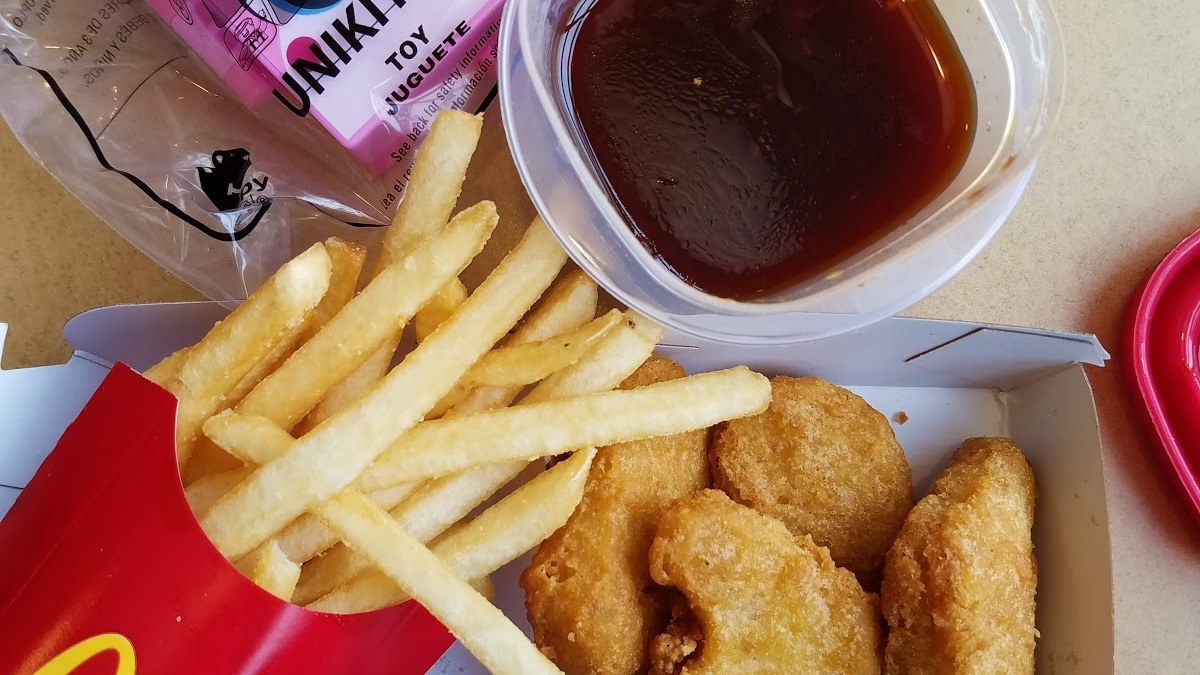How To Put Korean Wing Sauce On (Almost) Everything
Not too long ago, Takeout editor Kevin Pang sang a loving ode to lollipopped chicken wings. My favorite variation of lollipopped chicken wings, however, is the Korean variety, kanpoongi (though I am highly biased as a Korean-American). And if you've ever had them, you'll find that the sauce is just as big a part of the appeal as the chicken wings themselves: powerfully savory, spicy, and sticky-sweet. This is as addictive as food gets. We use a sauce with a similar flavor, a soy-chili glaze, to finish different pizzas at Paulie Gee's Logan Square, where I work, and it works to bring a lot of disparate flavors together in an unusually delicious way. This got me to thinking—if the sauce makes wings and pizza so damn good, what else could it do?
Korean chicken sauce is very easy to make; I used the one from Korean Bapsang, a Korean food blog with solid homestyle recipes. The base of the sauce is soy sauce, gochujang (sweet fermented Korean chili paste), ginger, garlic, sesame oil, honey, and vinegar. All you have to do is dump all the ingredients into a saucepan and reduce till syrupy.
I went with the low-hanging fruit route immediately and brought my cute little Tupperware container to McDonald's. A McNugget is an official cut of chicken, right? As you'd expect, the sauce hits the spot, and is definitely way more flavorful than anything on the McDonald's menu. A little of it goes a long way, but when I'm at McDonald's, I forget how timid the flavor of the food is (other than salty), which is why McNuggets cry out for any kind of sauce.
As a bonus, the sauce also goes perfectly well with the fries. Also, yes, that is a Happy Meal, an item I'm actually pretty sure I've never ordered for myself. It was glorious.

My love for Taco Bell is notorious, if not straight up obsessive to probably unhealthy levels, but love overcomes everything, right? So even though this felt like complete blasphemy, I brought the baby Tupperware full of sauce in to T. Bell for lunch. I went in, pessimistic, thinking this was just stupid. (I know you might think this kind of thing is stunty, but this is the kind of thing I do by myself with hopes I can make majorly stupid discoveries.)
I still have to accept and report disappointments, unfortunately. In the case of the Nachos Supreme, the sharp sauce didn't work very well to cut through the thick richness of the nacho cheese. I was, and still am, heartbroken.
But in the Taco Supreme, the taco tasted shockingly enhanced, with next-level amounts of flavor. The sweetness made the meat more savory, the salt boosted every flavor it touched, and the ginger cut through everything with a slight sesame aftertaste. I'm telling you, this is an honest-to-God game-changer. And, for the record, I've never been a fan of the basic tacos, just because Taco Bell creates wonders with a small stable of ingredients, but even the magic of Diablo sauce could not top this.

For the next experiment, I decided to root through my kitchen and mess around with pantry items. A peanut butter and banana sandwich is always good, but it's also kind of boring (hence, bacon, RIP Elvis). Adding a little bit of sweet and a little bit of heat didn't sound bad on paper, and the experience fit with my expectations. The hits of sauce come in doses as you're eating the sandwich, so you end up with a building trail of heat, followed by tiny kicks of ginger and a pleasant lingering sesame finish. I'll be eating a lot more peanut-butter-banana sauce-augmented sandwiches from now on.

Salty and sweet aren't strangers when it comes to dessert—so it's not like I'm exactly pushing the innovation envelope here by any means—but I liked the idea of the mix on dairy-based desserts. I tried the sauce with both salted caramel ice cream and a basic cheesecake. I'd had much higher hopes for the ice cream, but as the ice cream melts and mingles with the sauce, the flavor of the sauce doesn't incorporate well.
But the cheesecake with the soy-ginger-sesame sauce really stole the show. Since cheesecake is a fairly open canvas with a round creamy sweetness, it absorbs a roundhouse kick of soy and ginger and keeps running smoothly. By nature, I'm not a huge sweets eater, but I housed that cake (unfortunately, not the ice cream).

If you've ever had the Mexican beer cocktail, the Michelada, you know it's sort of like a much lighter and much friendlier session drink than a high-octane Bloody Mary. There's a kindred spirit that binds Mexican and Korean flavors so well, and while putting a sauce in a cocktail seems a little goofy, it turns the classic porch-crusher into a complex drink that almost feels like an actual snack. After I took my first sip of the mix, while comparing it to the original, I was happy to find out that you can improve on something I originally thought was perfect. This time the soy, garlic, and spiciness from the gochujang did the legwork to boost flavor.
When it comes down to it, kanpoongi sauce turns out to be extremely versatile, especially for things you'd imagine don't need extra flavor at all. It sneaks in and elevates the unexpected. And speaking of sneaking, sneak some into Taco Bell. No, seriously, someone do it to prove me right.
